In late summer, pokeweed (Phytolacca americana) drips with clusters of glossy black berries on fuchsia-pink stalks. The fruits’ juice has long been used as a dye and an ink. More fraudulently, until the late 19th century, pokeweed juice was added to anemic wine to create a deeper and higher-value red, with ill effect. The practice was eventually banned. But parts of pokeweed are edible and delicious, at the right time of year.
Read on to learn which, and when. With a bonus a recipe for Pokeweed Sloppy Josephines (a spicy version of Sloppy Joes).
Photography by Marie Viljoen except where noted.
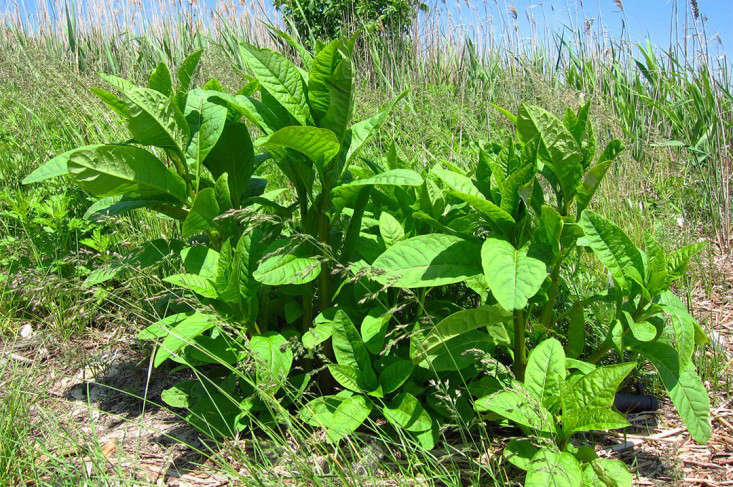
Horses and cows have been poisoned by pokeweed. Pigs that have snouted out the root have been sickened or killed. Toddlers who swallowed the unripe berries whole have been admitted to emergency rooms.
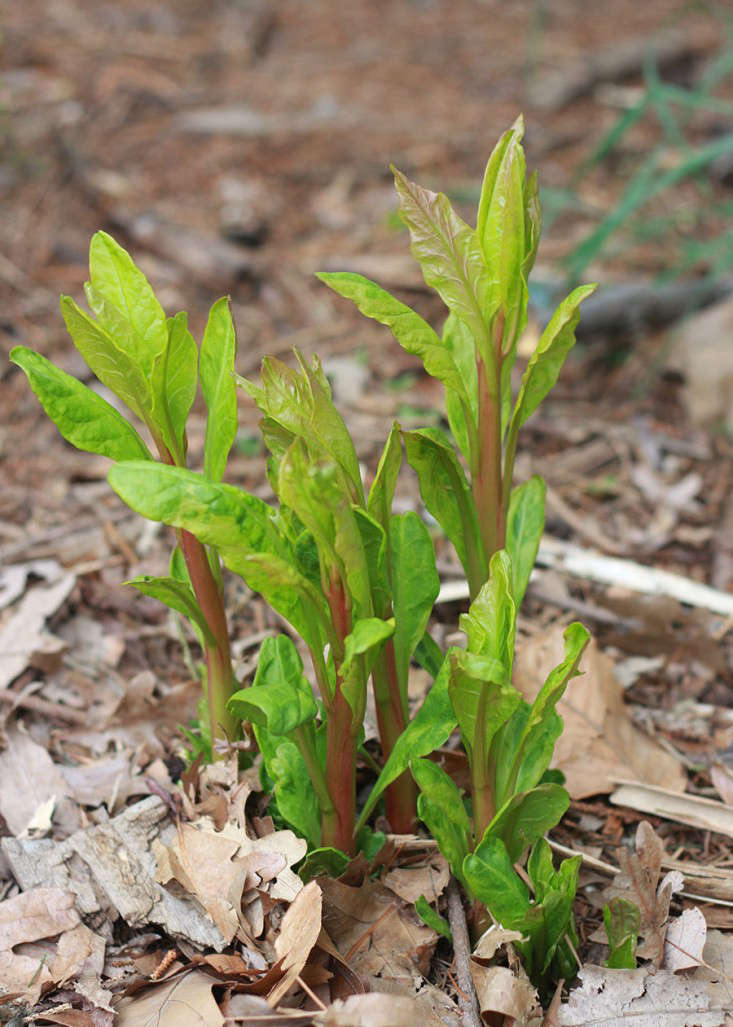
Above: So who eats a plant with such a dubious resumé? People who know that its young shoots and leaves are edible, and delectable. Cooked pokeweed shoots and young leaves are succulent, juicy and have a unique flavor. Native Americans knew this, and ate poke every season (toxic parts of the plant were used medicinally). In the modern South, poke is still a spring treat. Elvis made famous a 1968 song by Tony Joe White, ‘Polk Salad Annie’ who for supper would “go down by the truck patch and pick her a mess of polk salad…”
Enjoying this American vegetable safely is a question of knowing what part to eat, and when. After all, we don’t eat green potatoes, asparagus berries, rhubarb leaves, or raw lima beans. Convention has taught us better.
Above: Photograph by Mary Cassidy.
Pokeweed is a prolific and widespread perennial. By late summer it resembles a shrub, or even a small tree, since it rising from nothing to six feet or more in a matter of months. It thrives on neglect, at home in disturbed ground in city lots and country fields. It is the target of horticultural ire and a lot of herbicide.
Like most useful plants it has many common names: poke, polk, poke sallet, poke salad, American spinach, American nightshade, inkberry, and pigeon berry, among others. But don’t let the “salad” fool you; until we know otherwise for a fact, this is a plant to eat only cooked.
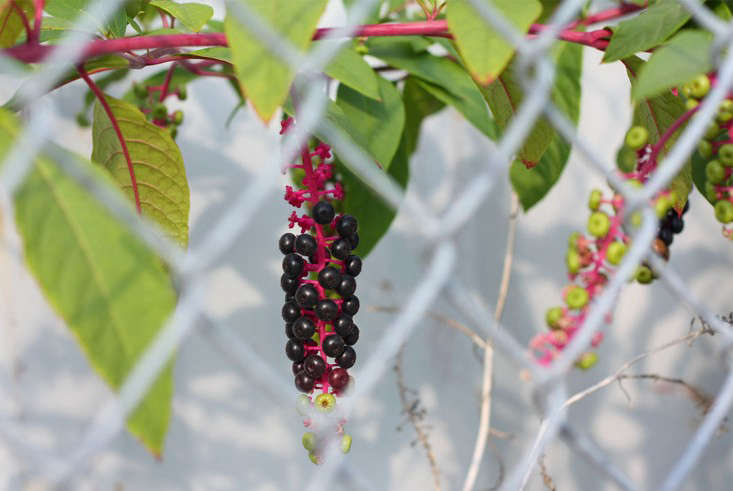
What parts of pokeweed are poisonous? The rhizome and roots are considered the most toxic, followed by mature (fibrous) red and branching stems, mature leaves, the raw, unripe green fruit, and finally the seeds inside the ripe fruit. (The ripe fruit itself tastes unpleasant but is made into jelly and sometimes pie, by dogged cooks wielding a lot of sugar).
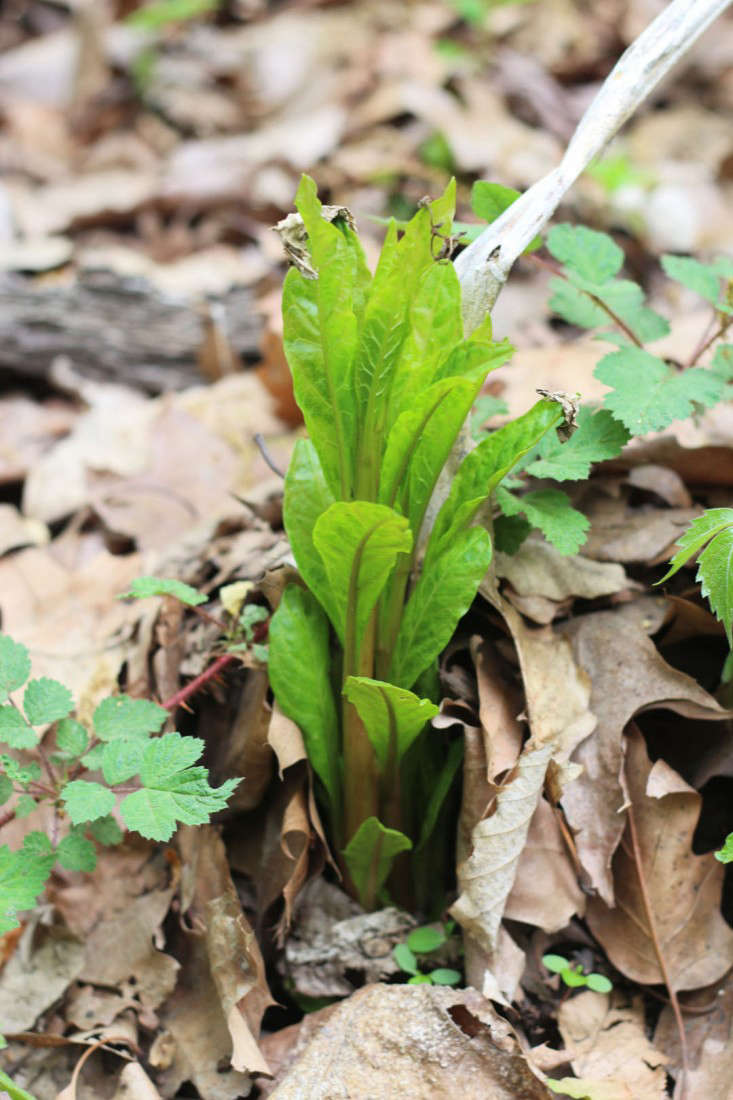
The edible part of pokeweed is the actively growing green shoot or stem, before the plant has branched. Some foraging resources will tell you to pick shoots up to a certain height, which is meaningless. Sam Thayer, the respected wild foods author who has debunked a foraging myth or two (and who cultivates pokeweed in his Wisconsin orchard), makes the most sense on the subject: “What matters is whether or not the shoot is still a vigorously growing meristem.” Meristem is plant tissue that is actively dividing. Think of asparagus: The part we eat is a shoot-the meristem of the plant that turns into a feathery fern (with, wait for it: poisonous berries!). “I openly discuss the known presence of toxins,” says Thayer, “but also acknowledge that this is perhaps the most commonly eaten wild vegetable in North America.”
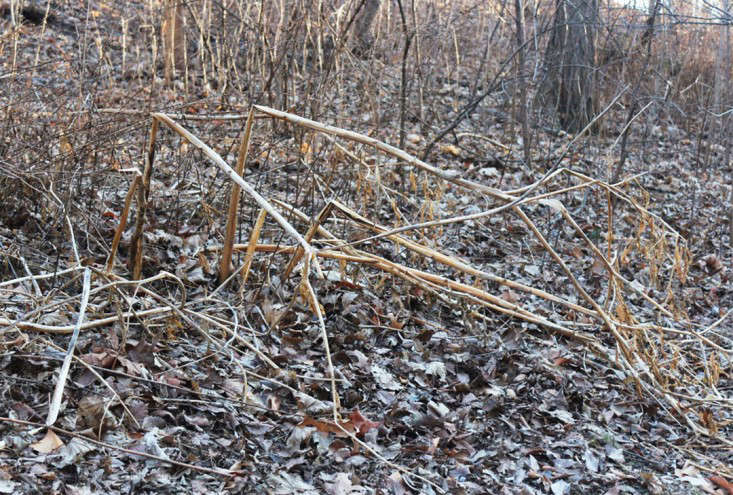
I often spot new pokeweed patches in winter. The previous season’s toppled stems are brittle and hollow, and skeletons of the old berry clusters are distinctive. I mark the spot and come back in mid spring.
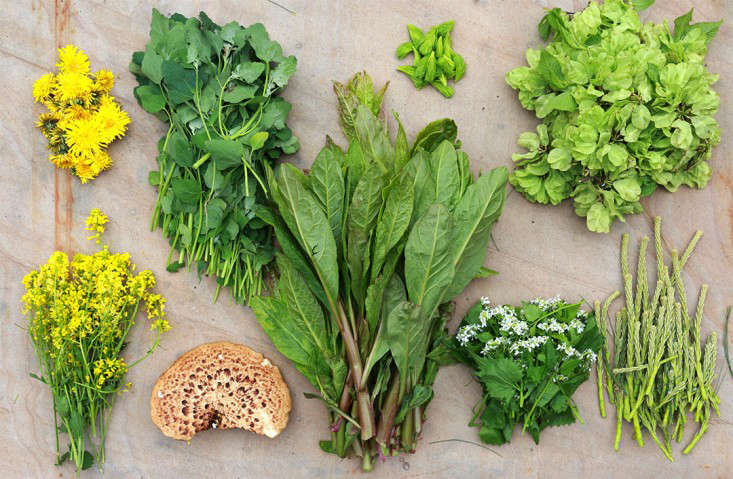
Harvestable pokeweed shoots appear around the same time as young lambs quarters, dandelion flowers, garlic mustard flowers, and elm samara (seeds). Well-wrapped, they last well for two weeks in the refrigerator.
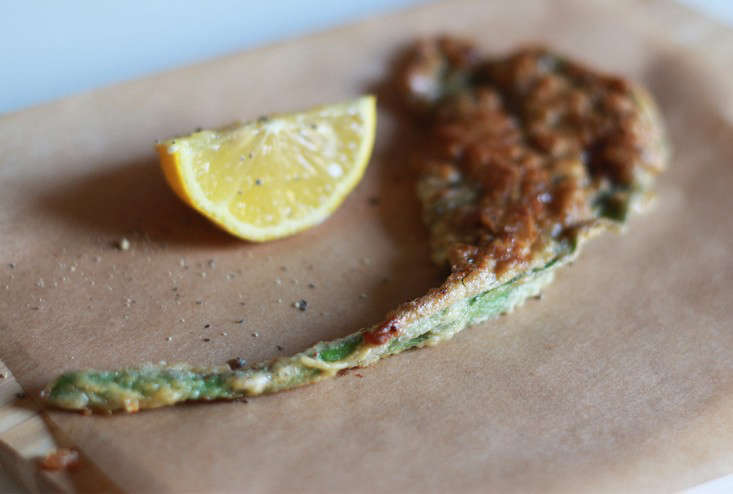
In Kentucky, Sheila Neal-Leger, a forager and fifth grade science teacher, remembers her mother getting excited and slamming on the brakes when she spied pokeweed coming up in fence rows. After being washed and dried “in front of a fan” the shoots were floured, egg-washed, and floured again, then “fried in lard, oil, or whatever fat we had at the time.”
Her mother picked poke stems up to three feet high, as long as they were not “pithy.” (This pith is a fuzzy white matter that develops in the center of the stem as the plant matures.) The poke stems were cut into six-to-eight-inch pieces and fried like the shoots. “They were a delicacy,” says Sheila, “and as children, we grabbed them fast from the platter.” Her sister takes poke to their family reunion every year in July, breaded with cornmeal and lightly fried, layered singly on a sheet pan and frozen. For serving she quick-fries them golden brown. “It is a family favorite and they don’t last long,” says Sheila. “They go quicker than the blackberry dumplings.”
At home Sheila uses plain flour with salt to dip her poke shoots. She then uses an egg and water wash to coat before flouring again, ”after which I hold each end and twist and tighten the leaves to make more compact and solid.” If necessary, she squeezes the floured and egged shoots so no loose leaves remain, inspiring one of her children to christen this dish “Kentucky Egg Rolls.” I have made them and they are delicious.
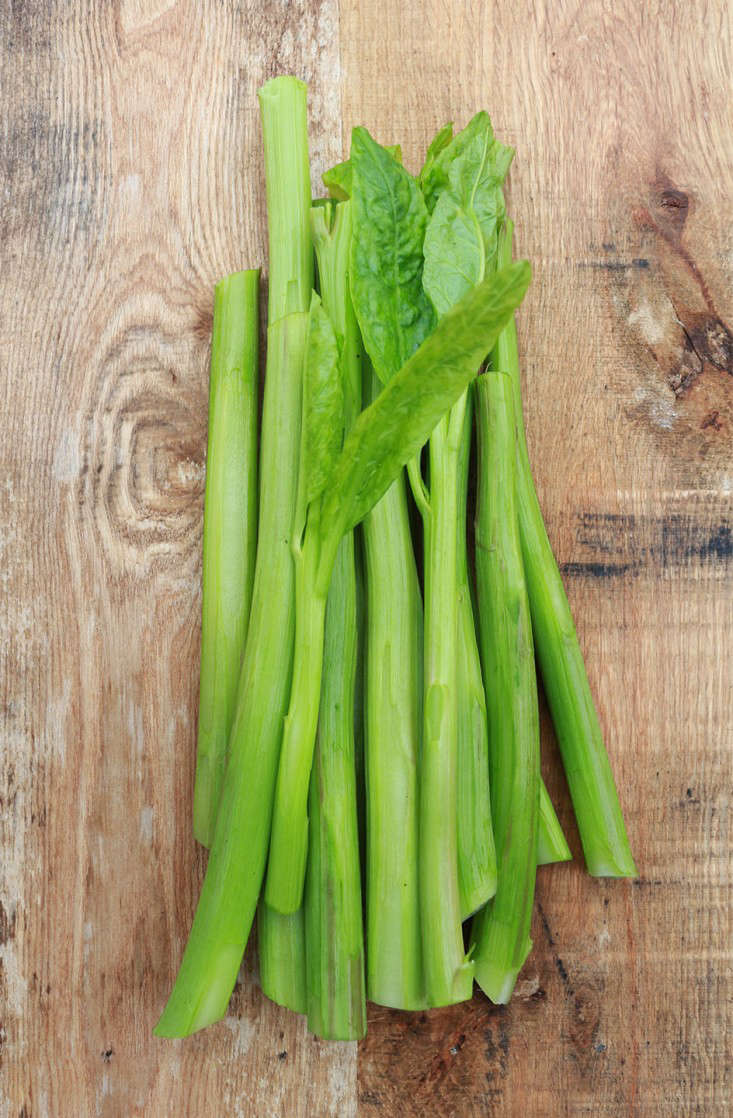
To prepare the stems, peel off any red to be on the safe side. I save tender young leaves to blanch and add to pasta sauces and fritters.
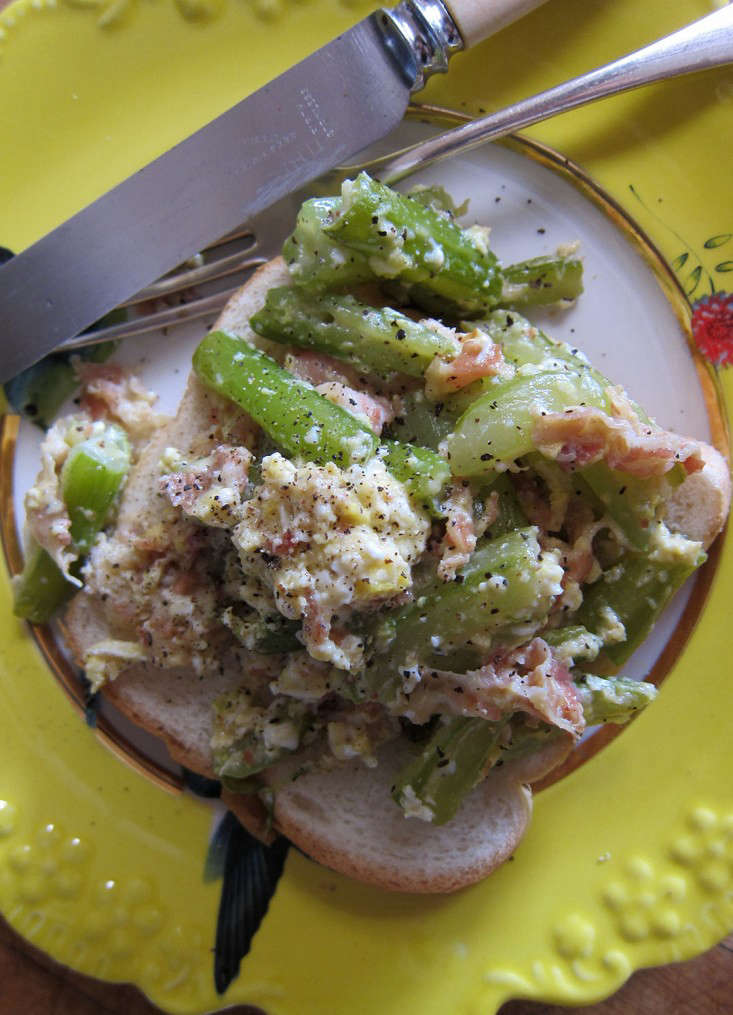
When I first started to eat pokeweed, I used a time-honored folk method of boiling the vegetable until it was completely dead. Then I added the prescribed mess of eggs and bacon. And piled it on Wonder Bread, for good measure. It was good, and it was a mess.
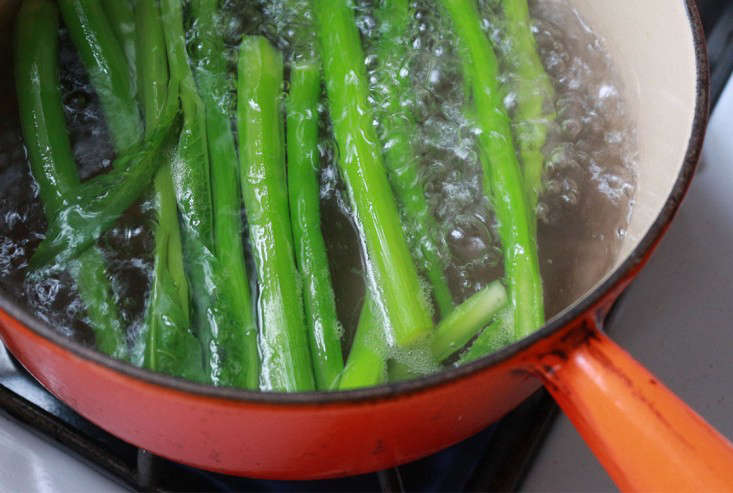
Many years inot my spring pokeweed-eating habit, I am wiser. I still cook the stems in boiling water, but just once, till tender, like asparagus. Then I toss them with strong flavors like anchovy and roasted lemon, fish sauce and lime juice, or serve them cool, with miso-mayonnaise.
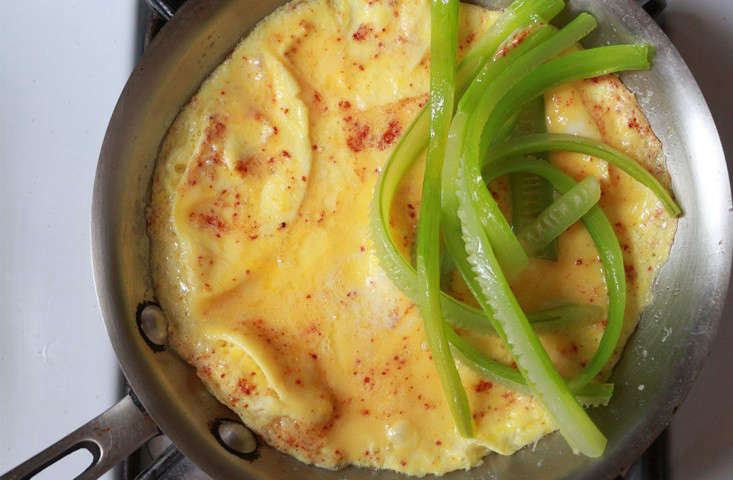
Dressed with a beurre blanc and slipped under the broiler the blanched shoots are a simple and sophisticated side dish or main course. Poke has an affinity for mushrooms and is delicious with fresh pasta.
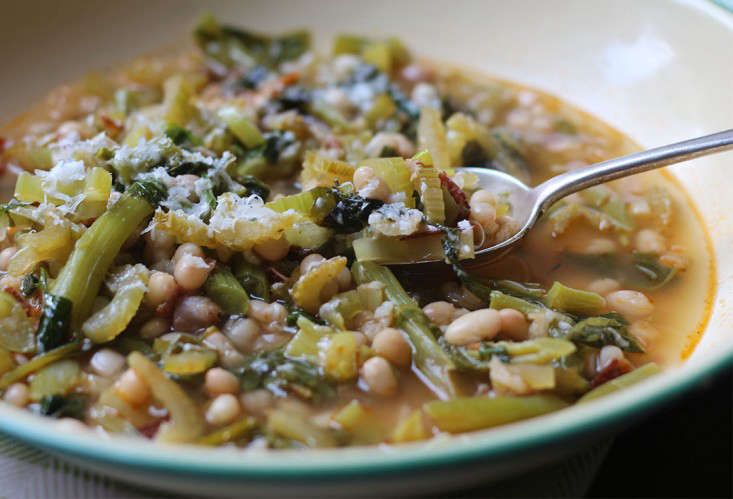
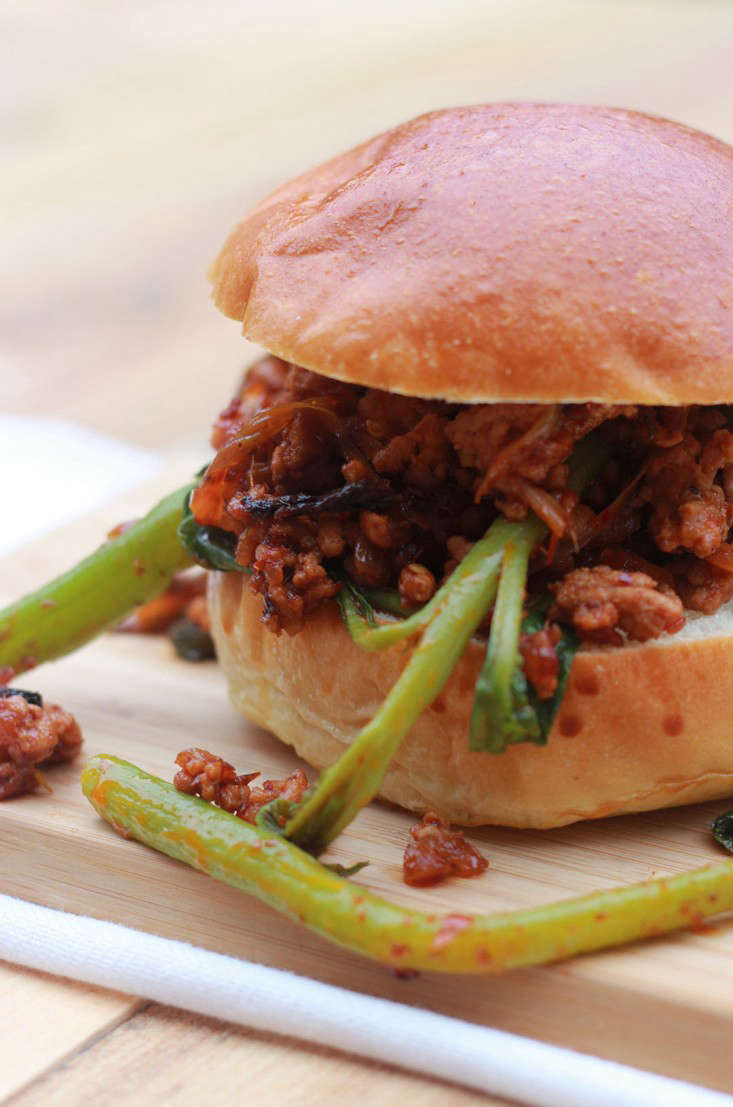
Pokeweed Sloppy Josephinas
Serves two, or makes four buns
My take on a spicy and feral Sloppy Joe, very good on a brioche bun, or served straight up—messily good food that honors pokeweed’s unpretentious culinary roots.
- 2 tablespoons unscented oil
- 1 cup onion, finely chopped
- 3 scallions, whole and sliced lengthwise
- 2 cloves garlic, thinly sliced
- ¼ teaspoon salt
- 10 young and tender pokeweed shoots, any red parts peeled off
- 2 tablespoons “black bean sauce with chili” (I use Lan Chi brand)
- 2 teaspoons sugar
- 2 chipotle chiles, soaked and chopped finely
- 1 tablespoon chile flakes
- 1 pound ground, humanely raised pork
- 1/3 cup water
- 1 teaspoon lemon juice
In a large skillet heat the oil over medium heat. Add the onion, scallions, garlic, and salt. Cover and cook for from 10 to 12 minutes. Remove the lid and cook another five until the mixture begins to brown.
While the onions are cooking, boil a pot of water and add the prepared pokeweed stems. Cook until tender, about four minutes. Drain and reserve.
To the skillet with onions, add the black bean sauce, sugar, chipotle, and chile flakes. Stir well. Cook another two minutes. Now push this mixture to one edge of the pan in a heap. Turn the heat to high. Add the ground pork, breaking it up with a wooden spoon. Cook for five minutes, until lightly browned at the edges. Stir the meat into the onion mixture and add the water. Cook at medium high heat until the water has evaporated. Add the pokeweed stems and turn gently to coat them with sauce.
Pile the mixture onto the sliced buns and serve at once. Pass the napkins.
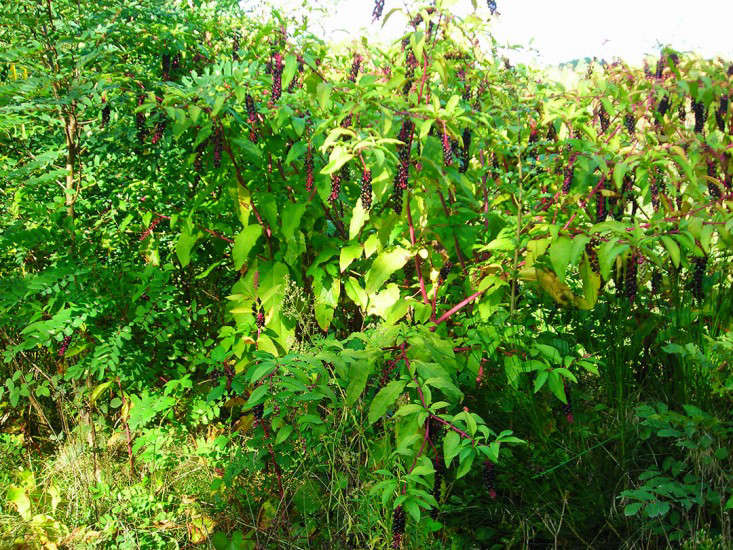
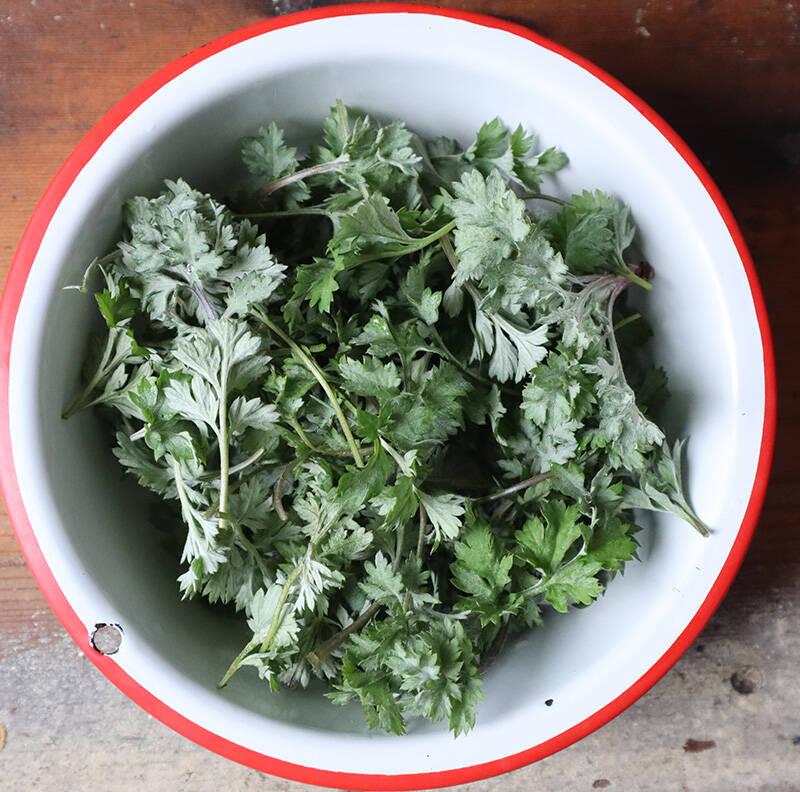
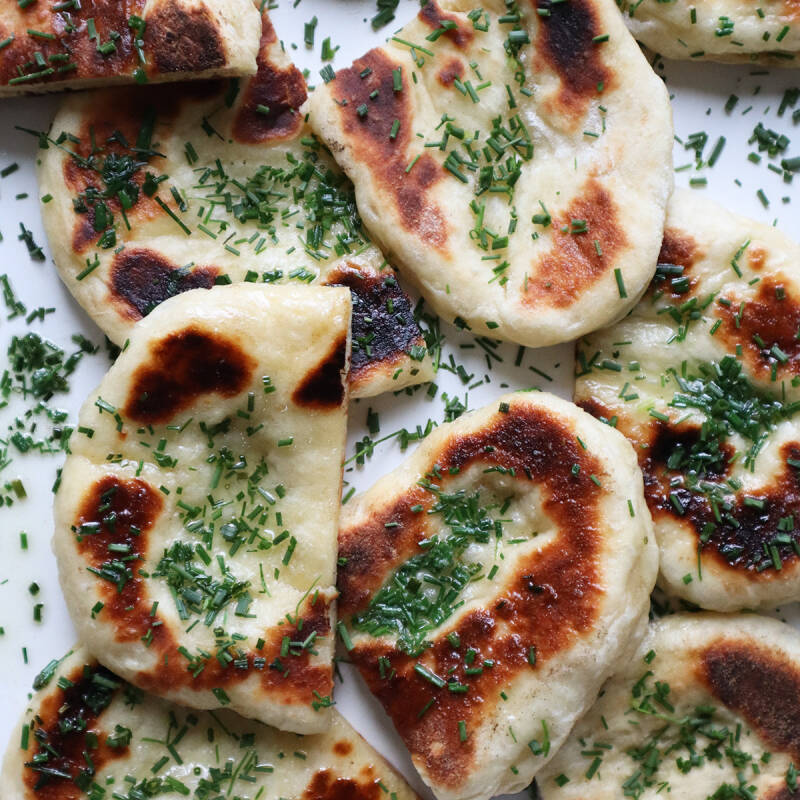
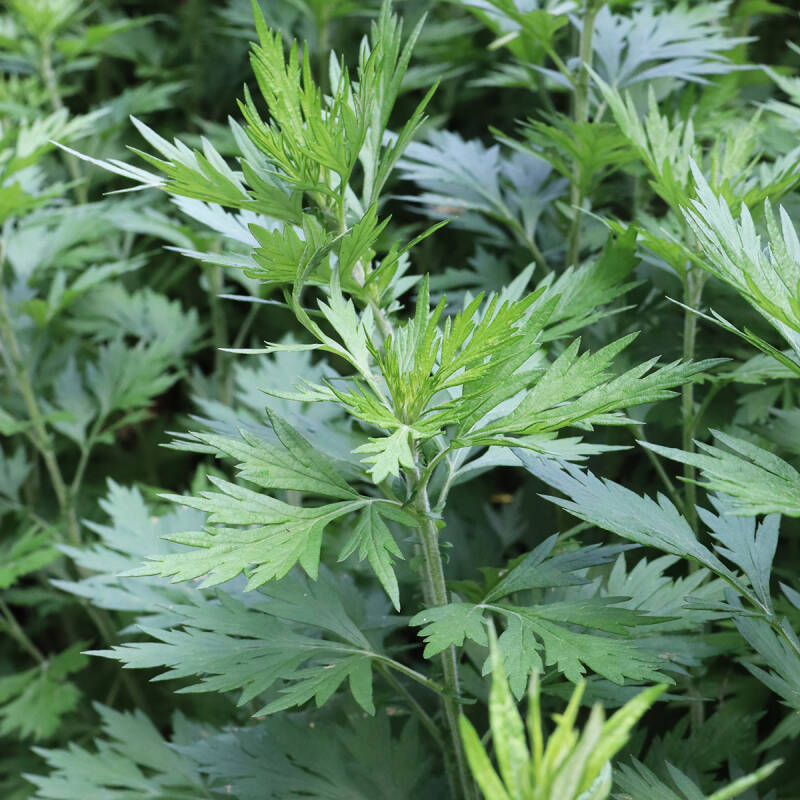



Have a Question or Comment About This Post?
Join the conversation